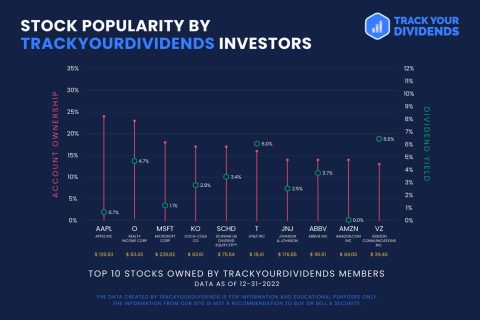Series I bonds are gaining buzz with an interest rate of over 7% and backed by the full faith and credit of the U.S. government.
Since the Great Recession of the late 2000s, one of the defining characteristics of the U.S. economy and economic policy has been historically low interest rates. This has been a very good thing for those taking out loans to make major purchases (such as a new home), but it has also had the effect of negating the impact of one of the most historically popular methods of accumulating funds: the savings account.
Savings accounts have been declining in popularity in recent years, and it isn’t hard to understand why. Most of them pay less than 1% in interest per year. This amount can’t even keep up with the rate of inflation, so most investors see it as a waste of time to invest money in a savings account when they can generally get better returns through other means, like owning stock in an investment account.
While investors are not utilizing savings accounts at nearly the same levels as in past decades, many lament this fact. Stock ownership offers the possibility of good returns through appreciation of the underlying assets or the payment of dividends, but there is also inherent risk. A stock might suffer a sharp drop in value or could cut or even stop its dividend payments. Savings accounts, conversely, do not carry these types of risks. They provide a steady stream of income and a protection of the principal that is invested.
With this in mind, is there any sort of product out there that can offer the features of a savings account but provide better returns than can currently be earned at the meager interest rates offered by most institutions? Fortunately, there is: Series I Savings Bonds. With a current rate of 7.12%, these safe bonds are paying significantly more than savings accounts, treasury bonds, and more risky debt. Let’s take a few moments to discuss them and how they may play a part in your investment portfolio.
Series I Bonds – What Are They?
Series I Savings Bonds are non-marketable interest bearing savings bonds, issued by the U.S. Federal Government that earn an initial fixed interest rate along with a variable inflation rate, which is adjusted on a semi-annual basis. They were first offered for sale by the Treasury beginning in September of 1998.
Series I bonds are non-marketable, which means they cannot be sold on a secondary market (in contrast to most corporate bonds, for example). Once a Series I bond is purchased, the only way that it can be divested is to be sold back to the Treasury.
The vast majority of Series I bonds issued today are electronic; however, a paper bond can also be purchased for a minimum of $50 utilizing funds from a Federal tax refund.
Who Can Buy Them?
For individuals to qualify to purchase Series I bonds, they must meet a few criteria. The individual must have a valid social security number and meet any of the following three criteria:
- Be a U.S. citizen, whether you currently reside in the U.S. or abroad.
- Be a U.S. resident.
- Be a civilian employee of the U.S. Federal Government, irregardless of where you live.
The best way to purchase I Series bonds is through the TreauryDirect portal. Although appearing dated, overall the site provides a straightforward interface. It can also be used to purchase many other types of treasury bonds, so be sure to make the right selection. You can’t purchase these bonds through a normal brokerage account, so these funds will be segregated from the rest of your portfolio.
Minors (those under the age of 18) can also have Series I bonds purchased for them by an adult, either electronically or with a paper bond, as long as they meet one of the criteria listed above.
Trusts, estates, corporations, partnerships, and some other entities also have the ability to purchase Series I bonds electronically. Trusts and estates also can purchase paper bonds in some specific cases, while corporations, partnerships and other entities cannot.
What Kind of Interest Rate is Offered?
As noted earlier, Series I bonds offer two types of interest rates; a fixed rate offered upon initial purchase that remains level for the duration of the bond, and an inflation adjustment that is adjusted semi-annually.
The fixed rate for Series I bonds is announced by the Treasury Department twice a year, on the first business day of May and the first business day of November. For example, let us suppose that, on the first business day of May, the Treasury Department announces that the fixed rate for Series I bonds will be 7%. All Series I bonds sold between that date and the first business day of November will carry that fixed 7% interest rate. On the first business day of November, the Treasury will announce a new fixed rate, which will be sold on all bonds until the following May.
The inflation rate is also announced twice a year in May and November; it is determined by examining changes to the Consumer Price Index (CPI). After the changes to the CPI have been gauged, it is used to calculate the total rate paid by the bond, which is known as the composite rate.
To calculate the composite rate, the following formula is used:
Composite Rate = Fixed Rate + (2 x Semiannual Inflation Rate) + (Fixed Rate x Semiannual Inflation Rate)
For example, if the fixed rate on a bond is 5% and the inflation rate announced is 0.75%, the composite rate for the bond would be as follows:
0.05 + (2 x 0.0075) + (0.05 x 0.0075)
0.05 + 0.015 + 0.000375 = 0.065375
In other words, this bond will pay a composite rate of roughly 6.5% until the next recalculation in six months time.
How Many Series I Bonds Can I Purchase?
Series I bonds are sold at face value; if a bond is advertised at $50, then you will pay $50 for it if you purchase it. Electronic Series I bonds are sold in any denomination above $25 to the penny; you could purchase a bond for $68.73, if you desire to do so. Paper bonds are more limited and come in five specific denominations: $50, $100, $200, $500, and $1,000.
During the course of a single calendar year, you are allowed to purchase up to $10,000 in Series I bonds electronically. You can also purchase up to $5,000 in paper Series I bonds using your tax refund for the year. Notably, these limits are not offsetting to one another. You are allowed to maximize both, meaning you could theoretically acquire up to $15,000 in both electronic and paper bonds in a calendar year.
What Are Series I Bonds Good For Holding?
Series I bonds represent a good investment for several purposes. One of the best uses is the creation and building of an emergency fund. Series I bonds only have to be held for one year before they are able to be redeemed. A purchaser could purchase Series I bonds in whatever denomination that they find sufficient, then allow the interest to accrue on the bonds until such time the funds are needed.
Series I bonds are also appropriate for small savings accounts. This is due to the fact that, at present, Series I bonds pay a significantly larger return than most savings accounts offered by private financial institutions.
Of course, by definition, Series I bonds are also a good vehicle to use to combat concerns about inflation. In times of rising inflation, the composite rate paid by a Series I bond will rise accordingly, allowing the holder of the bond to make ‘real’ (compared to nominal) gains that are not diluted by inflation.
What Are Series I Bonds Not Good For Holding?
There are also situations where it would not be a good idea to hold funds in Series I bonds. One would be if you needed to shift funds in and out with some frequency. Remember that Series I bonds have to be held for a minimum of one year before they can be redeemed. Furthermore, If a Series I bond has a lengthy maturity period, the five year penalty must be considered.
If a Series I bond is redeemed fewer than five years from the date of purchase, a penalty will be assessed wherein the most recent three months of accrued interest will be deducted from the redemption value of the bond. A person who is looking to move money in and out of a security with frequency would likely not want to be susceptible to this penalty.
Larger savings accounts are also not a good fit for Series I bonds, primarily due to the limits on purchases that can be made during any calendar year. This would require the purchaser to potentially make piecemeal purchases over several successive years, which could be disadvantageous due to fluctuations in the fixed rate or inflation.
Finally, it is not a good idea to utilize Series I bonds for estate processing or estate planning.As a result, they may not be the best tool for the elderly. Their heirs will likely experience more difficulty transitioning the funds from their original owner.
Conclusion
Recognizing their deficiencies, Series I bonds can be a great addition to your portfolio. I don’t believe a safer security exists paying 7.12%. Dividend stocks offer both income and capital appreciation, but rarely pay a 7% yield. Series I bonds offer an opportunity to increase your portfolio income and reduce the overall risk; a true rarity in the investment world.
Series I bonds represent a useful tool to earn an interest rate above and beyond what can currently be received from a bank and to protect against inflation. While they are not right for everyone, they can potentially play an important part in your investment strategy.




